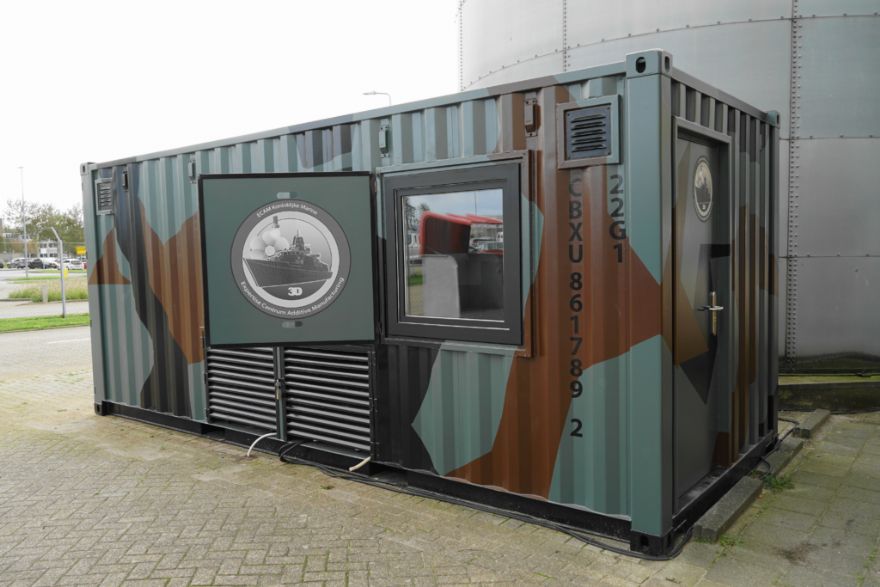
3-D printing is becoming more and more a key technology for the Dutch Navy, as by printing parts on board frigates, it will be less dependent of complex logistic operations.
The latest development is the AMCOD, a mobile repair centre that is integrated in a standard shipping container. Within an hour of installation anywhere in the world, defence units can start 3-D printing polymer parts, using an Intamsys Funmat PRO 410 3-D printer to produce replacement parts that are subjected to both mechanical and thermal stress.
When a Dutch naval vessel leaves the port of Den Helder (about 1hr from Amsterdam) on a mission, there are about 30,000 spare parts on board. These are needed to keep the ship operational during the time the mission lasts. These parts vary from high-quality engine parts to covers for the shower drain, protective covers for rockets to weed filters for cold water makers.
Max Nijpels, who works at the Expertise Centre Additive Manufacturing (ECAM), an innovation lab within the Directie Materiële Instandhouding (DMI — the maintenance department of the Royal Dutch Navy), said: “If we could print 10% of those 30,000 parts, we will reduce our logistics footprint dramatically. If we can replace that 10% with a 3-D printer and a few rolls of filament, we will save storage space, weight and logistical handling. At the same time additive manufacturing enables us to increase operational deployability.”
Maramex, the internal naval platform for the exchange of 3-D files, printer settings and descriptions, already contains several hundred components that have been tested and validated. So far, these are non-critical parts, for which PLA (Polylactic Acid) as a material is sufficient. ECAM now wants to go a step further, which is why it has invested in three high-temperature capable 3-D printers from Intamsys.
Mr Nijpels said: “We want to print replacement parts that can be used in, for example, the engine compartment, where the temperature can rise sharply. Or in applications in which the part is subjected to heavier mechanical stress.
“The Intamsys 3-D printers allow us to print with polycarbonate or PEKK just as easily as with PLA, thanks to the build chamber being heated to 90deg.
“The printer manufacturer has found the right balance in terms of temperature control so that the temperature is high enough to prevent warping and sufficient cooling to ensure good adhesion of the layers and to prevent the part from collapsing due to overheating.”